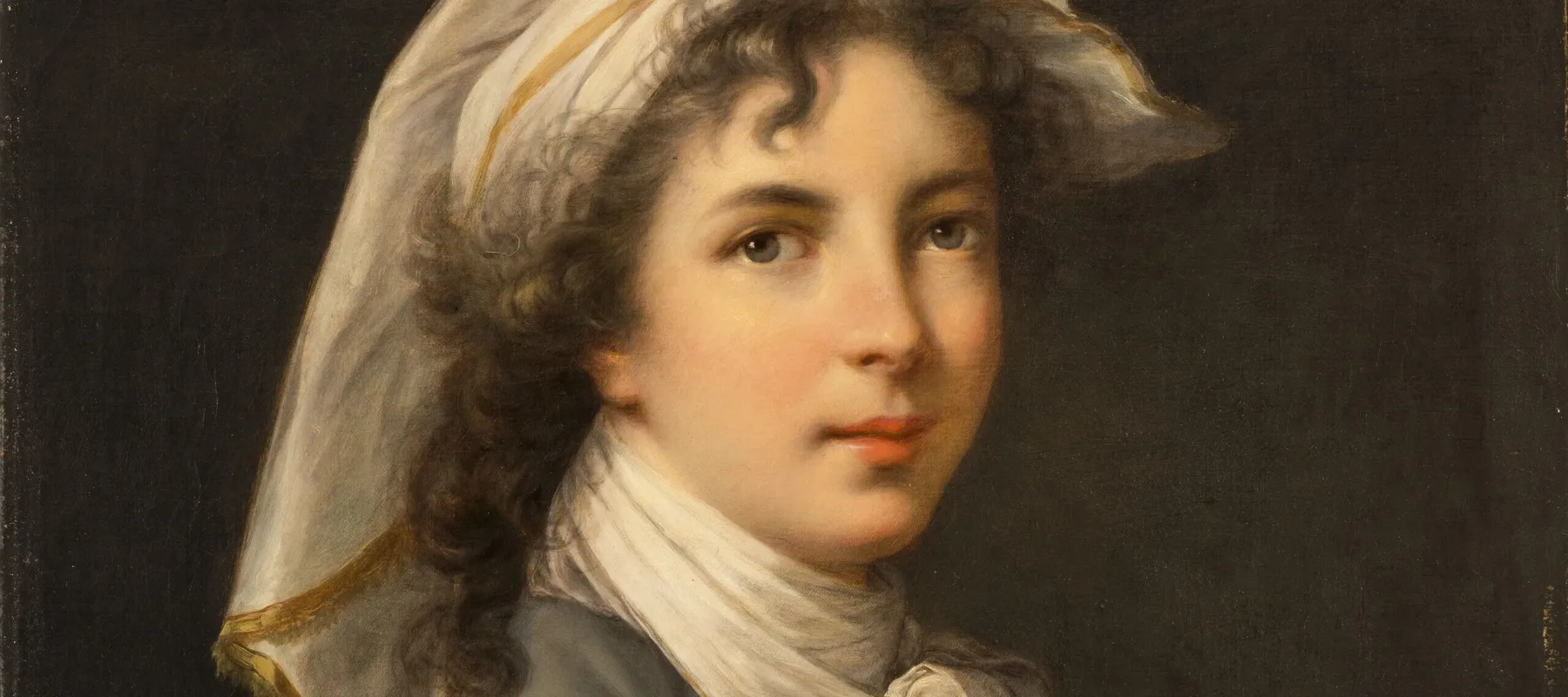In Royalists to Romantics: Women Artists from the Louvre, Versailles, and Other French National Collections, 77 works by 35 artists display the talents of French Revolution-era women artists. Their paintings are windows into their careers and the singular challenges of their time. The catalogue that NMWA has published to illustrate Royalists to Romantics includes essays as well as individual artist biographies that give insight into the lives of women artists working in France between 1750 and 1848. This excerpt explores the life of one the show’s featured artists, Élisabeth Louise Vigée-LeBrun.

Élisabeth Louise Vigée-LeBrun was one of the most celebrated painters of pre-Revolutionary Paris and is today the best-known female artist of her generation.1 Her first instructor was her father, Louis Vigée (1715 – 1767), who specialized in pastel portraits and taught in the Académie de Saint-Luc. Famously precocious, she had established her own studio by 1770 — the year she turned fifteen — and joined the Académie de Saint-Luc in 1774, sending works in both pastels and oils to the organization’s exhibition that year.
A 1776 marriage to the painter and prominent art dealer Jean-Baptiste-Pierre Le Brun (1748 – 1813) yielded both opportunities and complications. Through her husband, Vigée-LeBrun enjoyed access to important art collections in France and abroad; her painting style particularly reflects exposure to such seventeenth-century Flemish masters as Anthony Van Dyck and Peter Paul Rubens. That she had married into the art market would be held against her, however, when she sought membership in the Académie royale de peinture et de sculpture in 1783: academicians were prohibited from engaging in commerce. In the end, the support of Queen Marie-Antoinette trumped such concerns. Vigée-LeBrun was admitted to the Académie on May 31, 1783, the same day as Adélaïde Labille-Guiard, who is also included in this exhibition.

Vigée-LeBrun first painted Marie-Antoinette in 1778, the same year that she produced the portrait of the landscape painter and academician Joseph Vernet (1714 – 1789) on view in the present exhibition. Images of the queen regularly featured among the portraits and allegorical paintings that Vigée-LeBrun sent to the Louvre Salons of the 1780s. A staunch monarchist, Vigée-LeBrun wisely fled France with her daughter, Julie, shortly after the outbreak of Revolutionary violence in 1789. Her husband remained in France and divorced her in absentia in 1794, gaining control of her sizable assets.
For the next sixteen years Vigée-LeBrun would tour the courts of Europe. Feted in Florence, Rome, Naples, Vienna, Saint Petersburg, London, and other cities throughout the Continent, she returned to France in 1805 having painted a vast number of stunning portraits of the international aristocracy. Her travels constitute some of the most compelling moments in her unreliable but charming Souvenirs, first published between 1835 and 1837 and reprinted in many editions and translations since her death in 1842.
Note
1. Vigée-LeBrun has received more scholarly attention than any other artist included in this exhibition. For three very different approaches, see Joseph Baillio, Élisabeth Louise Vigée Le Brun, 1755 – 1842, exh. cat. (Fort Worth, 1982); Gita May, Élisabeth Vigée Le Brun: The Odyssey of an Artist in an Age of Revolution (New Haven, 2005); and Mary D. Sheriff, The Exceptional Woman: Élisabeth Vigée-Lebrun and the Cultural Politics of Art (Chicago, 1996).
